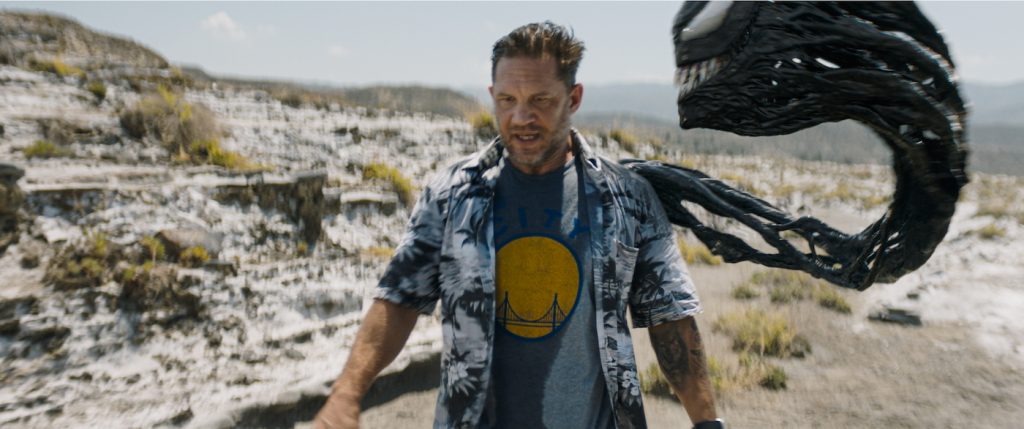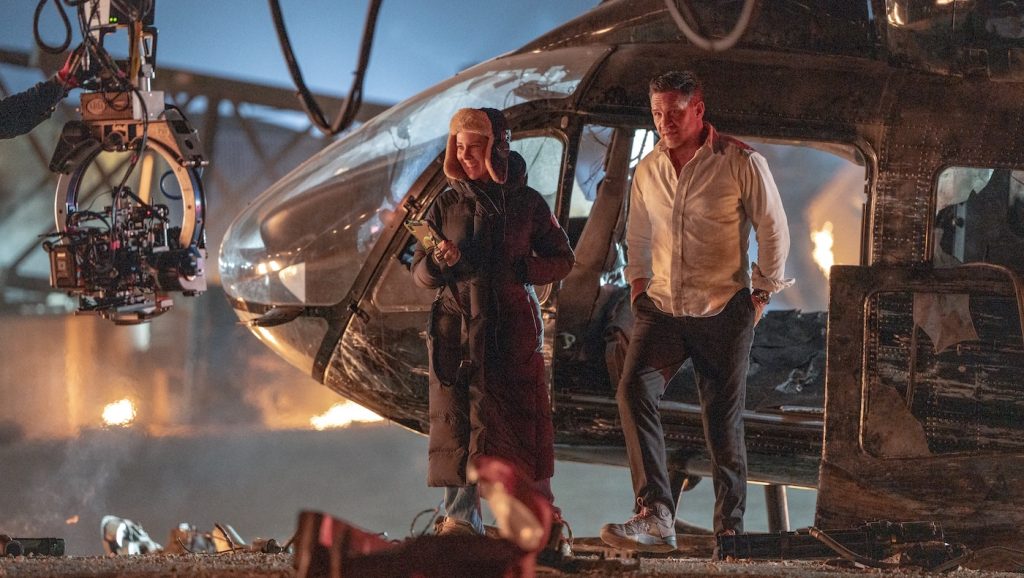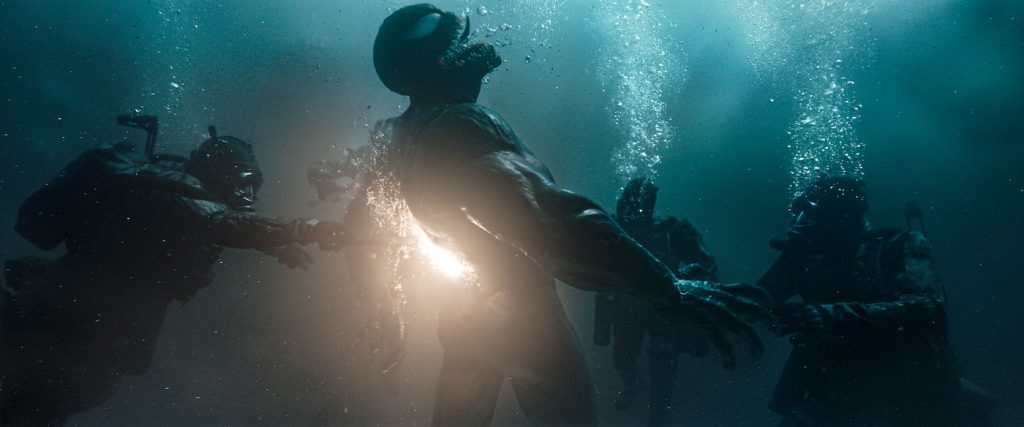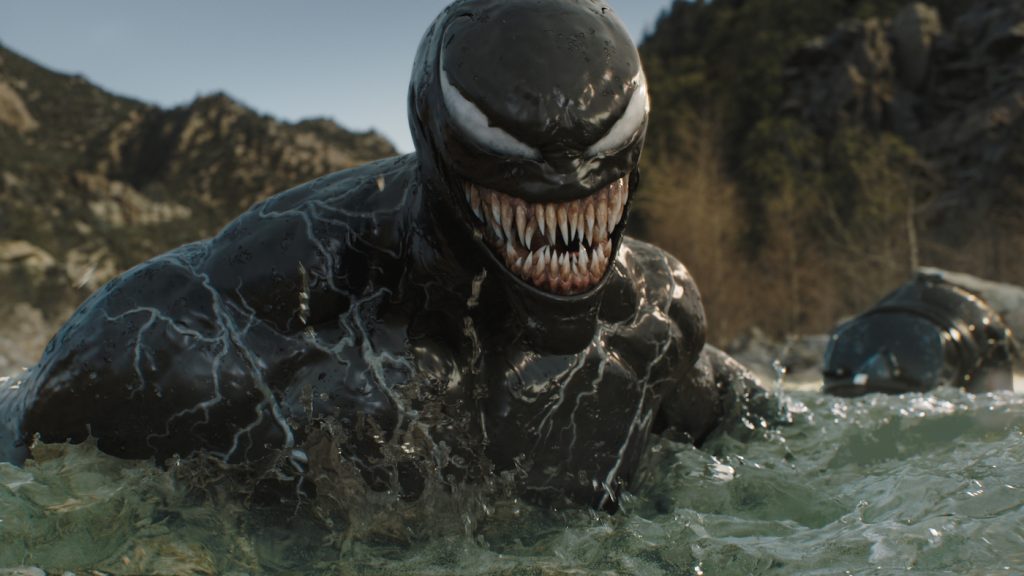“Venom: The Last Dance” Stunt Coordinator James Churchman on Tom Hardy, Wild Horses and Flying Kids
When he was nine years old, James M. Churchman bought his first motorcycle and started riding the backroads of his native Florida. A few years later, he became a professional stuntman, and by the late nineties, he’d invented a computerized flying system that is still in use today. In the 2000s, Churchman emerged as a go-to stunt coordinator for the Marvel Cinematic Universe, winning the 2014 Taurus World Stunt Award for staging Iron Man 3‘s 14-man free-fall spectacle. He’s also supervised stunt sequences for X-Men, Spider-Man, Ant-Man, and Doctor Strange movies. Most recently, he served as stunt coordinator for Venom: The Last Dance (now in theaters) starring Tom Hardy.
Written and directed by Kelly Marcel, this third installment of the Venom trilogy, co-starring Chiwetel Ejiofor, Juno Temple, and Rhys Ifans, follows everyman Eddie Brock (Tom Hardy) and his guttural-voiced parasite Venom as they road-trip through America with alien “symbiotes” in hot pursuit.
Speaking from the Sony Pictures backlot, where he’s working on an undisclosed new project, Churchman describes Tom Hardy as a quick study, deconstructs Venom‘s insane horse stunt, and shares the origins story of his Flying Hero Club.
Tom Hardy is widely viewed as one of the best actors of his generation. What does he bring to the table as the anchor of this Venom franchise?
For me, Tom brings heart. He’s been through his trials, and I was going through mine. We’ve had a lot of in-depth conversations about life, not just acting and whatnot. The way he connects to the real world and emotes—I think that’s what he brought to Venom. Tom’s a movie star, 100 percent, but he’s also this grounded dude.
What kind of learning curve did you expect from Tom when it came to prepping him for action sequences?
The second Venom movie [Carnage] was my first time working with Tom. He was coming off two knee surgeries, so we had to limit what we did, but even in Carnage, he did a lot of the wire work himself. The great thing about coming back for The Last Dance is that we had this foundation of trust so we could push further. He’s also in better physical condition, so we were flying him all over the place — he’s leaping 30 feet in the air, hitting the ground, sliding on his feet. And talk about a learning curve! There’s some motorcycle work in the third act where Tom has to drive a motorcycle, slide it sideways, come to a stop, deliver dialogue, and take off. To get prepared, Tom’s double Jake and I took him out to a dirt field. The first day, Tom’s like, “I don’t like the height of the bike” — dirt bikes tend to be taller – “I don’t like the gravel, I don’t like these tires.” I get it, so I say, “Let’s just spend some time getting used to it.” The next day, Tom comes back and nails it perfectly. I’ve never seen a learning curve like that.
SPOILER ALERT
The Last Dance builds toward this wild sequence where a horse suddenly grows Venom-like teeth and flies through the air with “Nick” barely staying on his back. How did you design that stunt?
Basically, the horse is real, up to the point where Venom takes it over. And Tom is real for the majority of that sequence because we did all his elements on wires. When the horse jumps off a cliff and Tom’s hanging on for dear life, we did that on stage using a plate we shot of a real mountain [as background]. Then [VFX coordinator] John Moffat put in the horse.

The hand-off between physical stunts and digital effects has come a long way since you started doing stunts professionally in 1993. How have you seen stunt technology evolve over the course of your own career?
I don’t want to talk about myself too much, but I want to talk a little bit about history – my father and grandfather built drive-in movie theaters. When I decided to become a stuntman, it was in Kentucky; I was 12 or 13 when they had a private showing of a Lee Majors movie called Steel. End of the movie, they had a dedication to a guy named A.J. Bakunas. He did a world record high fall, hit the airbag; the stitching blew open on the airbag, he went through it, hit the ground, and died. It just dawned on me, “Oh, that’s a job. That’s what I’m going to do.” My dad wasn’t too stoked about it.
The stuntman died —you get that part, right?
[Laughing]. That’s the irony. I know.
Early on, you didn’t just perform stunts. You also built your own gear.
Yeah. Because I was raised in a machine shop doing all kinds of fabrication, I saw the equipment involved in the stunt world. It was pretty rudimentary, and I thought I could have made it better. So, I started making air ramps. In 1998, I started building what I think was the first set of computerized flying winches in the industry. My buddies and I designed this system, which is completely programmed, repeatable, and controllable. Once you rehearse it a few times, it’s the same flight path doing exactly the same thing. That allows actors like Tom Hardy to concentrate on their performance along with the physical action.

Sounds like a big step forward.
The first movie I got it up and running on was Underworld 2 with Kate Beckinsale. It changed how far we could go because, to me, the best shots are when we push the physical stunts in the real world as far as we can before the visual effects take over to complete the action with something we couldn’t do safely [with practical stunts]. Together, we can create just about anything.

I imagine you worked closely with VFX on Eddie/Venom’s big third-act river sequence. How did you guys put that together?
We’d been shooting just outside of London at the Leavesden studio where the special effects team built this huge pool, 150 feet long, 25 feet wide, eight feet deep with controllable rapids and rubber rocks — it was great. When I watched the movie, I thought, “If you don’t know it’s not a river, you believe you’re in a river.” So we were going to do the real part of that sequence in the northern UK, but the union went on strike for four months, and that pushed us into winter. We had to find a better climate, so we found a river, a whitewater-rafting mecca, in northern Spain. Combined, I think we were two weeks in the pool and then shot for a week in the [Spanish] location, where we pre-rigged for a week and a half to set it up.

When you’re not supervising stunts on movies you run the Flying Hero Club for kids. How does that work?
I got the idea when I was doing an X-Men movie in Montreal and became friendly with the restaurant owner out in the woods called the Au Pied du Cochon. He has two kids, a boy and a girl who was five then, so I invited them to come by [the set] after hours and take a ride on the rig. They started flying together, and they were laughing. I looked over at their mom, and her face was full of tears. She says, “Our daughter is a two-time cancer survivor. I haven’t heard her laugh in a year because it’s been nothing but doctors and treatments, so for me to hear Sacha laugh right now is just the biggest gift.” I’m tearing up now just thinking about it. But at that moment, I listened to the universe and realized I could use my profession to help kids who are facing challenges in life so they can forget about all that for a day and just have fun. That’s when I started the Flying Hero Club.
What happens at a Flying Hero Club event?
We give the kids tee-shirts, masks, and capes, and a guitarist sings their names while they’re flying on billboards so when they get their video, it has their name in it. To date, we’ve had eleven events and flown over 700 kids. Tom Hardy helped me put one on in London when we did Venom 2, and the stunt community always shows up as if you wouldn’t believe it. And now we’re going to make a docu-series. Hopefully, it will effect a positive change for families struggling with the financial cost of medical care.
Repurposing your movie-making skills to give sick children a stunt-flying experience must be gratifying.
Those are my favorite days on the planet.
For more upcoming films from Sony Pictures, check out these stories:
Ralph Fiennes Says That Danny Boyle’s “28 Years Later” Was Shot Partly On an iPhone
Swing Time: Tom Holland Says “Spider-Man 4” to Start Filming Next Summer
Featured image: Tom Hardy stars as Eddie Brock/Venom in Columbia Pictures VENOM: THE LAST DANCE. Courtesy Sony Pictures.



